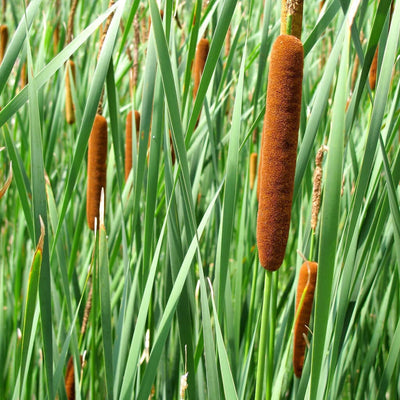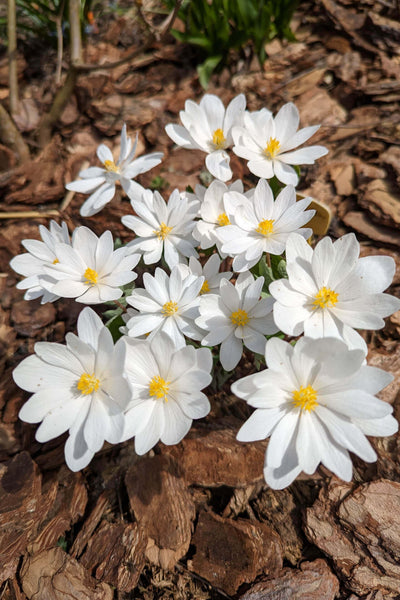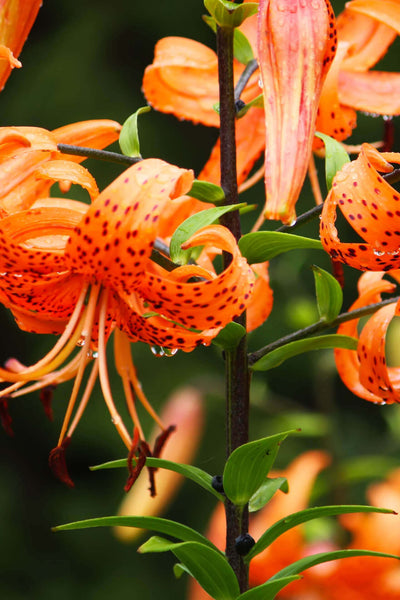![]() Native Plant Environmental Benefits: Enhancing the Garden and the Planet
Native Plant Environmental Benefits: Enhancing the Garden and the Planet
Integrating nature and gardening has an important yet often neglected addition: native plants. Native plants, as an ecological element, have numerous environmental impacts and equally improve the aesthetics of a garden.
This article presents the pros of growing native plants, some of the most useful native plants, and their environmental impacts. Also, we will touch upon some of the common wetland plants that thrive in the water features of a garden. Lastly, we have collated answers to the most common questions about native plants and their advantages.
What are Native Plants?
A native plant is a species whose presence in a specific locality is not the result of human intervention. Such plants have existed on the land for a long time and, with time, evolved to the prevailing conditions of the area’s soil, climate, and weather and the surrounding plants.
Native plants give a home to various wildlife and provide a balance in the surrounding ecosystem. To a gardener, native plants offer a wide variety of advantages and enhancements to the garden, ranging from lower maintenance to increased biological variety.
Native plants have won, and for good reason. These plants reduce water loss, enrich the soil, assist in the pollination of other plants, improve soil, and support a diverse range of animal life. In addition, native plants with their unique ecosystem support ever-decreasing animal pollinators like bees and butterflies, making them an excellent option for landscaping, as their ecological impacts are all beneficial.
Native Plants vs Non-Native Plants
Native plants are more beneficial to the environment than non-native plants because native plants are fully adapted to the environment wherein they grow. Native plants require less water, less fertilizer, fewer pesticides, and in general, do not harm the biosphere. Whereas, non-native plants are extremely harmful and invasive because they require excessive maintenance, chemicals, and are known to disrupt the biosphere and outcompete native plants.
The root systems of native vegetation are known to stretch considerably deep which assists in the reduction of soil erosion, one of the most problematic environmental issues. These root systems capture water, which facilitates the improvement of soil structure, therefore minimizing erosion and runoff.
Additionally, native plants produce shade and lower temperature for the soil and surface, which diminishes evaporation. They also serve as shelters and food sources for numerous species after their deaths. This form of mulch has a lower carbon nitrogen ratio than other plants, which accelerates decomposition and promotes soil fertility.
Plants for the Garden that are Native to the Wetland
These are known as aquatic plants. Native wetland plants are able to bring balance to a garden and ecosystem by softening the edges of water features such as ponds, waterfalls, and fountains. Some of the more common wetland plants are Cattails, Water Willow, Pickerel Weed, and Marsh Marigold.
Cattails
Cattails are a characteristically wetland plant with distinct cigar-shaped flower heads. They can reach a height of ten feet and flourish in both rocky and freshwater environments. The broad and leafy body of cattail has flower heads that serve as habitat to and sustenance for numerous species. For water purification and nutrient removal, cattails are also helpful.
Pickerel Weed
Pickerel weed is a durable wetlands plant with bold violet flowers from summer to fall. The heart-shaped leaves that float on top of water present beautiful scenery. The plant can reach a height of thirty inches. Its visually appealing flowers extend to the surface water, coloring and adorning garden ponds. Pickerel weed offers respite and sustenance for life.
Water Willow
Another beautiful wetland plant is water willow, which is more resistant to shallow water or damp soil. Gentle in contour, this plant displays long leaves similar to dangling willow leaves, and has blossoms that are pale pink to purple, which a water feature is sure to have. Aside from its attractiveness, this plant is also a water quality enhancer, as the excess nutrients absorbed are converted, and the fish kept in proximity are given ample coverage.
Other Indigenous Plants
As with wetland plants, the list of native species that can be used to decorate a garden while enhancing its ecological value is long. Examples include Aster, Tiger Lily, Blood Root, Geranium, and Creeping Jenny.
Aster
Asters are perennials that bloom from late summer to fall and can tolerate sun to partial shade. They are essential in a pollinator-friendly garden, attracting bees and butterflies. They are especially beneficial for pollinator-friendly gardens. Their blooms come in purple, pink, and white.
Tiger Lily
The bright orange flowers of the tiger lily are possibly the most recognizable in any garden. These plants do exceptionally well in sunny areas while adding height and color to garden beds and are relatively easy to care for. Tiger Lilies serve as a food source for bees and butterflies as well.
Creeping Jenny
Creeping Jenny is a groundcover that grows quickly to conceal the ground. With bright, yellow summer flowers and maroon, decorative leaves in fall, the bilobed leaves bring wonderful color throughout the garden. It makes a wonderful edging plant and does very well next to ponds and other wet areas in moist soil.
Wetland Plants and Wildlife Habitat Enhancement
Wetland plants serve an integral function in improving the attractiveness and the health of the water features of a garden. They enhance the aesthetics of the garden and in addition, helps in improving the water quality, wildlife habitat, erosion control and ecosystem restoration. In the instance of a garden having any water features like a pond, a waterfall, and a fountain, inclusion of wetland plants will improve the water quality significantly and also augment local wildlife habitat.
Native Plants’ Positive Environmental Impacts
Water Provisioning
Compared to non-native plants, native plants are biologically suited to the climate and soil conditions, which minimizes the water requirement. They are also drought-resistant and thrive with very little watering, helping the cause of water conservation.
Soil Improvement
Native plants with their deep-rooted systems greatly help in improving the structure while simultaneously reducing soil erosion. Their roots facilitate water permeation to the soil, thereby reducing runoff and increasing rainwater absorption.
Biodiversity
Many birds, butterflies, and even some small mammals are reliant on native plants. Helping pollinators, which are essential in food production and functioning of the ecosystem, is one of the many benefits you get when you incorporate native plants in your garden.
Pest Control
Chemical spraying due to local pest infestations is commonly used, but native plants help to alleviate this problem. This, in turn, helps protect the garden ecosystem from the overuse of pesticides and saves important pollinators from poisoning, such as the bees and butterflies.
Conclusion
The use of native plants in your garden not only increases its aesthetic value; it also positively contributes to the local ecosystem. They help to improve soil health by providing critical soil cover, as well as conserving groundwater recharge. Furthermore, they also require minimum care, positively assist in providing cover for wildlife, and improve the overall wildlife habitat. Whether it is wetland for your garden beds or composites for your water bodies, native plants are a sustainable garden option.
For any inquiries, as well as to design your personal setter garden, browse through the gallery of TN Nursery, an online store with a well-cultivated inventory.
FAQs
Does planting native plants help the environment?
The Native plants' impact on the ecosystem is profound as they boost wildlife, enrich the soil, reduce water usage, and enhance biodiversity. Also, native plants are more eco-friendly as they release lower amounts of chemicals and fertilizers, which are pollutants.
What is a potential environmental benefit of using native plants instead of traditional lawns?
Aside from less water usage and removal of harmful chemicals, using native plants in place of traditional lawns has many other ecological advantages. They require less upkeep, provide a habitat for local pollinators, and improve soil health by reducing erosion.
What are the drawbacks of planting native plants?
Some possible downsides to planting native plants that nurseries are likely to sell are that they are slower to establish, look unkempt, or are unadmired. These conditions, however, are often outweighed by the planning and care that goes into nurturing the flower.
Why are native plants better than non-native plants?
Native plants are better than non-native plants because they are aligned with local environmental conditions. This makes the newly established flora more resilient to disease, pests, and other stresses. Furthermore, they are more likely to need low conditions in water, maintenance, and fertilizer, while supporting local wildlife habitats.
What is the 70/30 rule in gardening?
According to the 70/30 rule in gardening, 70% of the area of the garden should be planted with native plants, and the other 30% can be planted with non-invasive non-native species. This promotes native biodiversity and the beauty of non-native plants.
Do native plants improve soil?
The answer is yes. Native plants help by improving the structure of the soil and reducing soil erosion. Native plants with deep roots help improve soil moisture and aeration, promoting moisture and soil retention for other plants in the ecosystem to thrive.






